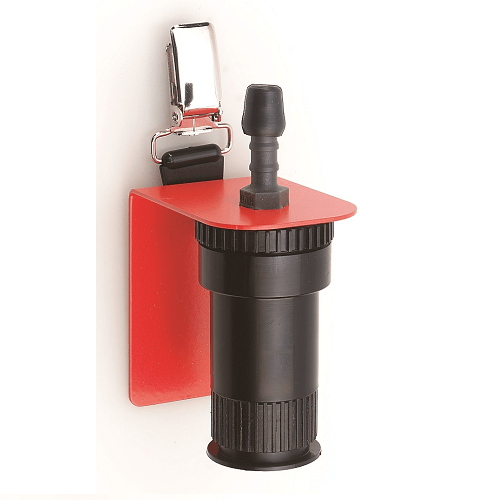Understanding Asbestos Testing Cost Aspects
Understanding Asbestos Testing Cost Aspects
Blog Article
Your Guide to Effective Asbestos Checking Treatments
Asbestos screening procedures are an important element of ensuring the safety of indoor environments, particularly in older buildings where this harmful product might be existing. The prospective health threats connected with asbestos exposure make it necessary to approach screening with accuracy and thoroughness.
Comprehending Asbestos and Its Risks
Asbestos, a normally occurring mineral understood for its warm resistance and sturdiness, poses serious wellness dangers when its fibers are inhaled or ingested. asbestos survey. Direct exposure to asbestos can cause significant health and wellness conditions such as lung cancer cells, asbestosis, and mesothelioma cancer. Despite its advantageous residential properties, asbestos has actually been commonly prohibited in many countries due to the tried and tested link in between asbestos exposure and these life-threatening conditions
When asbestos-containing materials are disrupted or harmed,The danger exists in the tiny fibers that can easily end up being air-borne. When inhaled, these fibers can come to be lodged in the lungs, triggering inflammation and scarring gradually. The latency period between direct exposure to asbestos and the advancement of related diseases can extend a number of decades, making very early discovery and avoidance important.
Asbestos was frequently used in building products, insulation, and vehicle parts before its health dangers were fully understood. Today, correct screening and elimination of asbestos-containing materials are vital to shield individuals from the threats related to asbestos direct exposure.
Identifying Potential Asbestos Materials
The identification of possible asbestos materials is an essential action in making sure the safety and security of individuals revealed to unsafe compounds in various environments. Asbestos can be located in a wide variety of building products, consisting of but not limited to insulation, ceiling ceramic tiles, flooring ceramic tiles, cement sheets, and roof covering tiles - asbestos air testing. Determining these materials precisely is vital to efficiently managing the threats related to asbestos direct exposure

In situations where aesthetic examination is undetermined, samples of thought materials can be gathered and sent to certified labs for screening. These laboratories use specialized techniques such as polarized light microscopy or transmission electron microscopy to precisely determine the visibility of asbestos fibers in the samples. By following strenuous recognition procedures, individuals can properly alleviate the risks related to asbestos exposure.
Choosing the Right Screening Technique
Identification of prospective asbestos products plays a vital duty in figuring out the appropriate testing technique for precise asbestos fiber detection. Once presumed products have been identified, choosing the ideal screening technique is necessary to ensure trustworthy outcomes. There are 2 primary approaches for asbestos testing: polarized light microscopy (PLM) and transmission electron microscopy (TEM) PLM is commonly used for first testing as it is economical and offers quick outcomes. Nonetheless, PLM has restrictions in spotting asbestos fibers that are smaller than 1 to 3 microns. On the other hand, TEM is an advanced technique that can accurately determine asbestos fibers at the ultrastructural degree. While TEM is much more costly and taxing than PLM, it supplies greater level of sensitivity and uniqueness in asbestos discovery. Choosing the suitable screening method depends on different elements such as the kind of material being examined, the needed sensitivity of the analysis, and the available spending plan. It is essential to speak with recognized asbestos screening professionals to establish the most this content ideal approach for your specific testing needs.
Performing Example Collection Securely
When accumulating samples for asbestos testing, prioritizing safety measures is paramount to lessen possible direct exposure dangers. Asbestos fibers are unsafe when disturbed, making it important to follow proper security protocols during example collection - asbestos testing service. Before beginning the sampling procedure, ensure that you are outfitted with individual protective devices (PPE) such as disposable coveralls, masks, gloves, and safety glasses to stop breathing or call with asbestos fibers
It is necessary to wet visit this site the sampling area utilizing a mild haze of water to prevent the fibers from coming to be airborne throughout collection. Usage care when gathering samples and stay clear of aggressive scraping or drilling that might release asbestos fibers into the air. Instead, carefully cut a small piece of the product using suitable devices and place it right into a sealed container for analysis by a certified laboratory.
Additionally, labeling each sample with detailed information relating to the tasting area, date, and collection agency's name is vital for precise record-keeping and analysis. By following these security standards, you can conduct sample collection for asbestos screening effectively while reducing the danger of direct exposure.
Analyzing Examination Outcomes and Next Steps

Final Thought
To conclude, effective asbestos screening procedures are essential in identifying and handling prospective health risks connected with asbestos direct exposure. By comprehending the threats of asbestos, recognizing possible materials, picking the right testing approach, conducting sample collection securely, and interpreting test results accurately, people and organizations can take the essential actions to protect themselves and others from the dangerous results of asbestos. It is important to focus on safety and proper testing methods to make certain a healthy and balanced atmosphere for all.

Identification of possible asbestos products plays a critical duty in figuring out the proper testing approach for accurate asbestos fiber detection. The examination results will show the existence or absence of asbestos, the type of asbestos fibers existing, and the focus levels.In verdict, efficient asbestos screening treatments are vital in identifying and taking care of prospective health threats linked with asbestos direct exposure. By recognizing the risks of asbestos, determining possible materials, choosing the right screening method, conducting example collection securely, and translating examination results properly, organizations and individuals can take the required steps to shield themselves and others from the hazardous results of asbestos.
Report this page